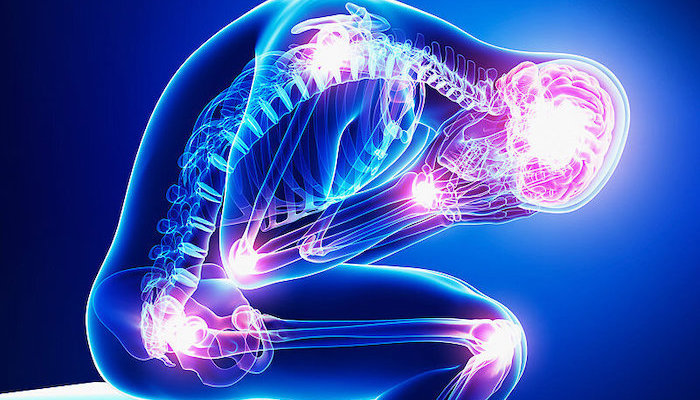
Fear and pain are closely related. The more you fear pain, the worse the pain gets. Learn how eliminating fear can help to relieve real physical pain.
Chronic pain tends to have an element of fear attached to it because its unpredictability and inherent unpleasantness have taught us to be wary. The greater the fear, the more our brain and bodywork to keep us in ‘fight or flight mode. This saps our body of healing resources, directing our energy for combat or evasion against possible threats instead. We become hypervigilant, and start to pay extra attention to bodily sensations, especially painful ones.
The longer pain lasts, the harder it can be to cope. It’s only natural that we start to develop negative thoughts and associations every time pain strikes. Unfortunately, this only serves to worsen the pain experience and compound fear. This can lead to a vicious cycle of yet more pain and fear. The situation can feel hopeless, but it can be reassuring to know that you can take action to break this cycle.
What Happens if Pain Doesn’t Stop?
Acute pain is no laughing matter, but knowing that we will recover can provide a sense of reassurance. But what happens if that pain becomes chronic and never leaves? If all you’re doing is getting by day-by-day, with no light at the end of the tunnel?
The average person would likely begin to develop a negative feedback loop, based on learned experiences. The brain starts to store these stimuli in its long-term memory, in a process known as fear conditioning. This stimulus – be it the weather, images, smells, sounds, etc – become triggers that a person can start reacting to in an unhealthy manner. They may cause anxiety, an increase in blood pressure, tensing up our body, etc. None of these side effects are pleasant, and pain can end up being both the cause and effect at this stage.
Perhaps the pain a person experience is the same amount daily, yet the frequency heightens their awareness and lowers their tolerance of it. While this can be helpful in the short term when a person is recovering from an acute injury, it serves no good purpose in chronic pain.
The Impact of Fear on Our Brains
Fear activates the amygdala in our brain, which processes emotions, and triggers the fight or flight response. Constant worry impacts the CSTC pathways, which affect cognition and emotions. They combine to reduce the neocortex (thinking brain)’s ability to manage goal-directed behaviors. In other words, fear has hijacked our brain’s circuitry, holding us hostage to our pain, be it mental or physical.
Disuse, Disability, and Depression
Fear-related pain can be either physical or mental in nature. Kinesiophobia is the term used for fear of movement or activity that results from a feeling of vulnerability to reinjury. Your brain starts associating that particular action with pain. It ‘trains’ you to avoid that behavior, in an attempt to prevent further harm.
But this has negative consequences because disuse weakens the body over time. This can further lead to disablement or mental health issues. It is not uncommon for pain patients to develop depression, anxiety, and become hypervigilant. These mental side effects feedback into the pain loop. Mental and physical pain now bounce and feed off each other, with the potential to grow.
Assessing Beliefs on Fear, and Rehabilitating the Mind
CBT (Cognitive Behavioral Therapy) and Graded Exposure are some proven therapies that doctors/psychologists use to rehabilitate patients. Patient education is important; first, they need to assess their fear beliefs before their brain is able to untangle its association with pain. Next comes re-educating it back to a healthier state of mind.
For patients whose fears are deep-seated – usually from long-term accumulation or a rollercoaster ride of pain symptoms – this will be a much harder task. But don’t give up hope – it’s not impossible. If our brains and bodies can teach themselves to deal using the current mechanisms, then it’s possible for them to pick up alternative coping methods, too. The brain is a complex and amazing organ that’s neuroplastic by nature; that means it is changeable, malleable, and can be rewired to manage and even heal from chronic pain.
Begin Your Recovery from Fear and Pain
There are some simple exercises you can do right from the comfort of your own home to get started. Mindfulness activities, visualization, and breathing techniques are great examples.
Many of these practices can be combined for maximum benefits as well. We have a whole series on self-help mind-body activities coming up on our blog; sign up for our newsletter to get instant updates in your mailbox.
Precision Pain Care and Rehabilitation has two convenient locations in Richmond Hill – Queens and New Hyde Park – Long Island. Call the Richmond Hill office at (718) 215-1888, or (516) 419-4480 for the Long Island office, to arrange an appointment with our Interventional Pain Management Specialist, Dr. Jeffrey Chacko.













